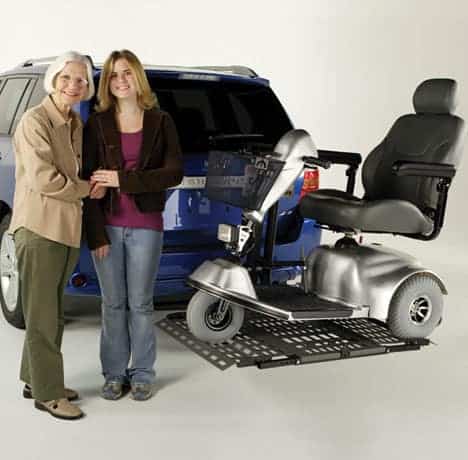Thinking about the future and planning to age-in-place can be complicated; for instance, should you plan-ahead for mobility issues? Depending on current health challenges, this is not an unwise strategy. Autonomy and independence are compromised when health deteriorates, or injuries arise. Circumvent this outcome by planning-ahead for such situations.
Is it possible to plan-ahead for physical limitations or mobility issues? The industry experts at Pacific Mobility believe so- in fact, preparing for future health crises may be key in preserving autonomy and aging in place later-on. It is estimated that nearly half of Americans older than 75 report issues with walking, standing or lifting; how can you preserve your independence when physical needs and hurdles increase?
Protect and Preserve your Mobility
Mobility encompasses much more than the ability to walk independently. Mobility also includes the ability to complete activities of daily living (ADLs), such as bathing or preparing meals, as well as the ability to safely navigate the home environment with the ability to venture out into the community, as needed or desired.
Maintain Mobility as You Age
Maintaining mobility is imperative for quality of life as you age; specific mobility issues can impede independence and prevent people from performing ADLs, like eating, bathing, dressing, toileting and moving safely, which may jeopardize independent living and aging in place. Problems with ADLs is a primary reason behind nursing home admissions or implementation of in-home health aides.
Continue to Engage
When you suffer from a reduction in mobility, it may also impede your level of social engagement. Social engagement has been studied and found to be an integral component of holistic health and wellness across the lifespan. Reduced mobility may decrease your level of participation in family activities, hobbies, leisure activities, and socialization. Continue to engage as you age and get out into the community; this may reduce your risk for depression and curb isolation. Planning ahead must involve facilitating social engagement and interactions, whether this means integrating supports, maintaining a vehicle, or moving closer to loved ones.
Assess your Health
Make sure to have your health assessed regularly by your provider or practitioner and be realistic about your overall level of wellness; do you need to lose weight? Move more? How is your blood pressure or other factors related to a heart attack or stroke? Even minor physical issues including muscle weakness, poor balance, excess weight, or chronic pain all contribute to and worsen mobility issues or physical disabilities. Consider also how cognitive impairments, like dementia, vision, or hearing issues can impact your ability to live independently when combined with physical challenges. It may require clever planning and inventive mobility solutions; talk to a mobility expert to find a good fit for you.
Get Proactive
But, what can you do about it now? There are many different approaches and tactics that you can take to plan ahead for potential mobility issues, challenges, and disabilities. For example, are you doing what you can to improve your chances at remaining mobile the older that you get? Some of the proactive things that you can do now for better health- and mobility- later include:
- Start a physical activity regimen to maintain strength, balance, and flexibility. It is never too soon or too late to make these important lifestyle changes.
- Make changes in the home that reduce trip-and-fall hazard, like replacing flooring or de-cluttering the home.
- Invest in mobility aids, like grab-bars and reaching tools, that can make everyday life easier while reducing the risk of an injury.
- Are you overweight? Take-off excess weight and keep it off. Eat a diet that is rich in fiber to also help you feel lean and limber.
- Think about other, overall health strides that you can make. For example, if you smoke, quit; this will reduce risks of stroke, heart attack, and respiratory issues. Hauling an oxygen tank around wherever you go is not going to assist with your mobility.
- Look at alternative transportation resources in your area in case your driving is restricted due to a health or mobility issue.
- Work on flexibility and range of motion with low-impact activities like swimming or yoga. Start now.
These are strategies that you can- and should- start any time. These basic practices will help keep you as mobile and autonomous as possible, by paying attention to basic, holistic wellness. Planning-ahead for mobility issues may seem cynical, but it is a practical and reassuring way to live out your life the way that you choose, where you choose. Aging in place is about living on your own terms, without being forced due to health or mobility problems.
Talk to the mobility insiders at Pacific Mobility in California to learn more about planning ahead for things like mobility issues. They will help to steer you in a direction that complements aging in place and an autonomous lifestyle as you age. Call today.
President, Husband, Father, Grandfather Graduate of UC Davis- Bio Sci Major- Go Aggies! Jeff has extensive experience in all of Pacific Mobility’s products and services, and specializes in accessibility products as well as stairlifts, ceiling lifts and custom wheel chairs. His hobbies include spending time with family, gardening, mountain biking, exercising and off road motorcycle riding.
24 years as Owner/President of Pacific Mobility Center – selling, installing, and servicing stairlifts, porch lifts, ceiling lifts, pool lifts, handicap ramping, specialty wheelchairs, scooters, power wheel chairs, and other power mobility devices
Certified Environmental Access Consultant since 2008
Licensed General Contractor since 1998
Certified Aging in Place Specialist since 2016
Board Member for Home Access Professionals
Member of Association of Members of the Accessibility Equipment Industry (AEMA)




